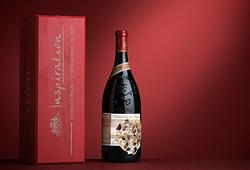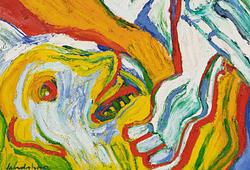Gösta Adrian-Nilsson
"Indian" in a cubist landscape
Signed GAN and dated -13. Pencil and gouache on paper 25.7 x 19.5 cm.
Saleroom notice
Private collection since 1950/60s.
Hence by descent to present owner.
Provenance
Private collection since 1950/60s.
Hence by descent to present owner.
More information
Av sin vän i Motala, Egon Östlund, fick GAN i julklapp 1915 Fenimore Coopers indianböcker. Ungefär samtidigt som han under julhelgen slukade "Den siste mohikanen" och "Hjortdödaren" påbörjade han sitt dagboksskrivande: den svarta vaxduksboken med sitt röda snitt döps som en indian till "Svartbok". "Må Du till Ditt väsen också vara indian - aldrig glömma en välgärning, aldrig förlåta en oförrätt", skriver GAN trettondagen 1916 och fortsätter: "Det inbundna, bistra och stolta hos dessa smalmidjade, stålmusklade män och ynglingar griper mig ständigt med samma kraft". Det aktuella katalognumret som är utfört redan 1913 visar på GAN:s tidiga intresse för indianen som en tankefigur och symbol vilken är återkommande i konstnärens produktion. Denna tidiga akvarell är i sina friska och klara färger en kubistisk (pojk)dröm.
Artist
Gösta Adrian-Nilsson is most notable as a visual artist, and he is a pioneer of Swedish modernism. He studied at the Tekniske Selskabs Skole in Copenhagen and later for Johan Rohde at Zahrtmann’s school in Copenhagen. As an avant-gardist, Nilsson was constantly searching for new influences. In Berlin, he was influenced by the circle around the radical magazine Der Sturm, through Kandinsky and och Franz Marc. In Paris through Fernand Legér and the artists in his circle. GAN was an eclectic in the positive sense of the word. He took the the artist styles of the 1900s and created new impressions. Symbolism, cubism, futurism, expressionism, constructivim and Theosophy were the colours occupying his internal pallet. He had a sharp eye for the masculine and his painting was often energized by the vitality of modern technology, vibrant eroticism, and echoes of tyrants. No other Swedish modern artist exhibits such a unique style.
Read more











































